London Book Fair 2018
Held in April 2018, the London Book Fair is always a busy event, packed with publishers, writers and increasingly illustrators. This year AOI was involved in several illustration focused events.

The LBF continued to expand it’s exposure for illustration this year, offering a special Illustrators’ Gallery to showcase work to the international publishing community over the three days of the Fair, and to give illustrators and publishers a space to meet and network. Several AOI members took up this opportunity.
We asked illustrators who exhibited at London Book Fair in 2018 for their top tips. Some were seasoned Fair going pro’s – for others it was their first time:
– Be prepared! I think the key to getting success from the London Book Fair is to know who is attending. The list of attendees seems massive before you go, but once you get there the sheer scale of the event is slightly overwhelming, so having a plan is very worthwhile. Otherwise, you can completely lose focus and just end up randomly approaching people who either have no use for illustration or who your work is not suitable for.
– Try to contact or at a minimum get names for suitable contacts who are attending the fair beforehand. It is really difficult once you are there to get time with people if you don’t at least know specifically the person you want to talk to. Arranging meetings beforehand is ideal, but my experience was that the majority of people either didn’t get back to me, or were already really busy. So trying to contact them as early as possible would also be useful!!
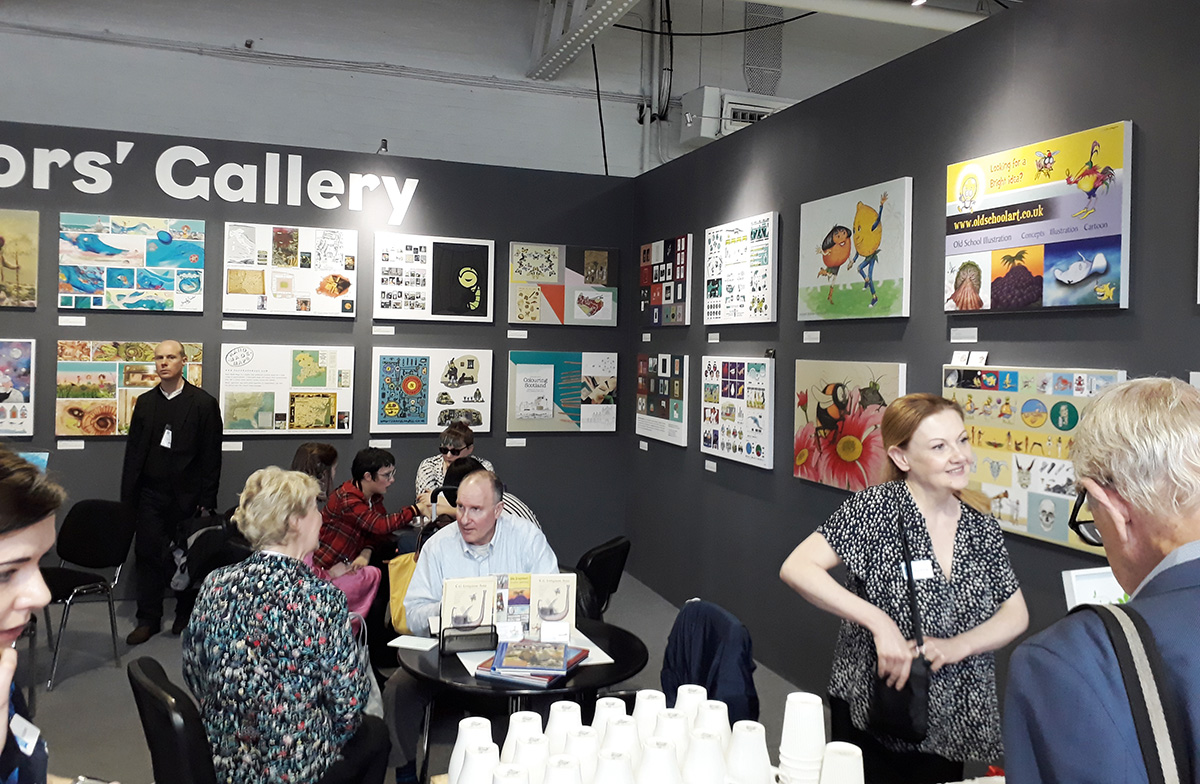
– Once you know which type of publisher you want to approach prepare your portfolio to appeal to those types of publishers.
– Leave something behind. When I pulled out a pre-prepared A5 portfolio of work I had had printed to hand out to publishers and other interested parties I always got a small “oh!” of pleasant surprise. There’s nothing worse than someone showing interest in your work and you not being able to give them a sample. I suppose a business card will do the trick, but trade fairs being business card galore, it’s sometimes hard to remember afterwards who each card belonged to. A small token portfolio of just a few pages might jog someone’s memory more efficiently.
– Don’t be afraid to approach people – everyone is there for the same thing – networking. Don’t hang around your own exhibition space – go and actively seek contact with others!
– When you are planning your exhibition, give yourself an idea of the scale. I marked out on a wall the size of the display boards with drawing pins (you could use big pieces of paper).
– Give yourself some time to just take it all in – it’s a huge event, and you could be a bit overwhelmed by it, and exhausted by it if you try to do too much. Take a little time to enjoy the atmosphere and the craziness of it all!
– Take your own water / lunch. It can get quite hot inside, and, as you’d expect, the food stands are pricey.
– In terms of dress, err on the side of a more formal attire: I found I was taken more seriously wearing a blazer and a collared (although made from black denim) shirt. Everyone else looks presentable, and I think dressing appropriately helped me feel that I belonged. Maybe it didn’t actually make a difference to anyone else, but at least it gave me self-confidence.
AOI presented three events at the Fair to packed audiences. In the first one Managing Director Ren Renwick spoke to Children’s Laureate, writer and illustrator Lauren Child (and the inaugural Illustrator of the Fair) about her career journey – how she overcame artistic and business challenges, secured work and created her own style in print and in her wider communications.
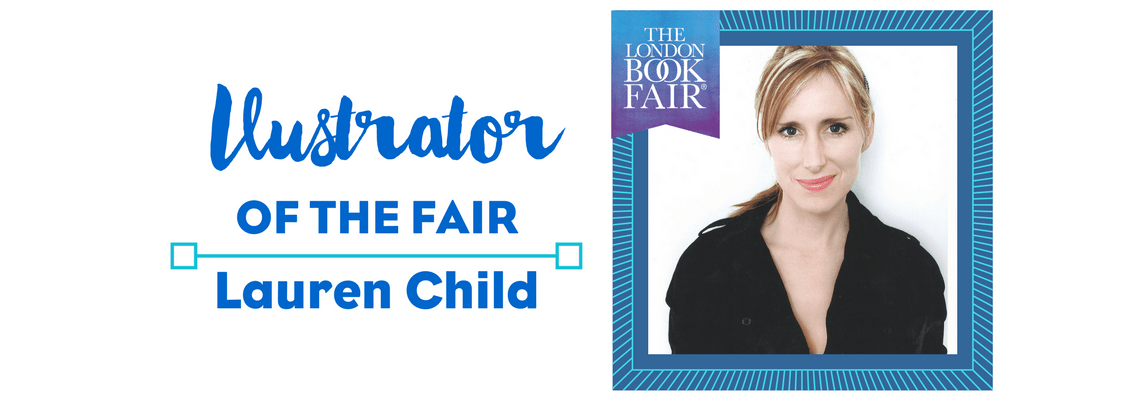
Lou Bones delivered a ‘squeezed-down’ AOI Illustrators Business Masterclass version of our popular business masterclass, covering self promotion, the commissioner journey, client negotiation and an overview of rights.
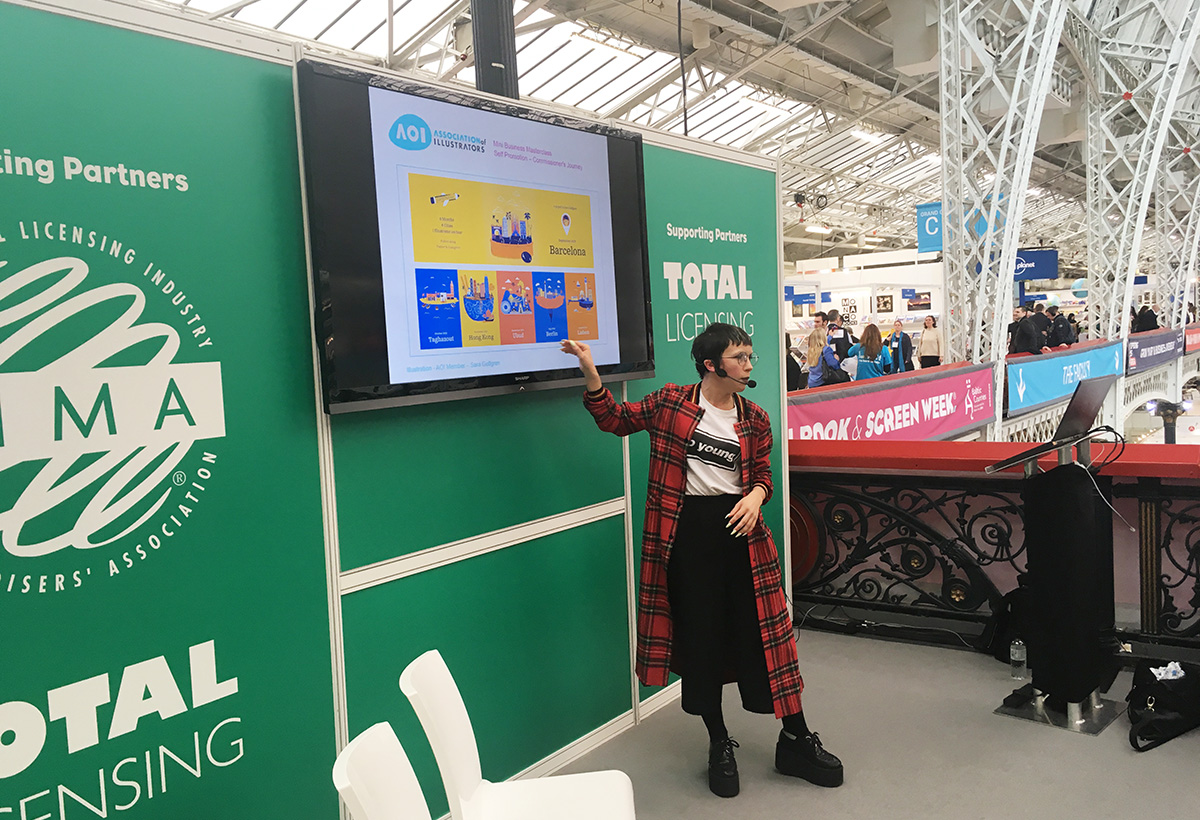
And Derek Brazell moderated the Klaus Flugge Prize: Once Upon a Picture seminar with panel members Children’s Laureate Lauren Child, Senior Commissioning Editor of Flying Eye Books and Nobrow, Harriet Birkinshaw and Sue Buswell Editorial Director at Andersen Press. With a wealth of experience to draw on, the panel discussed opportunities in publishing, new trends in picture book illustration and what is exciting people in the industry at the moment.
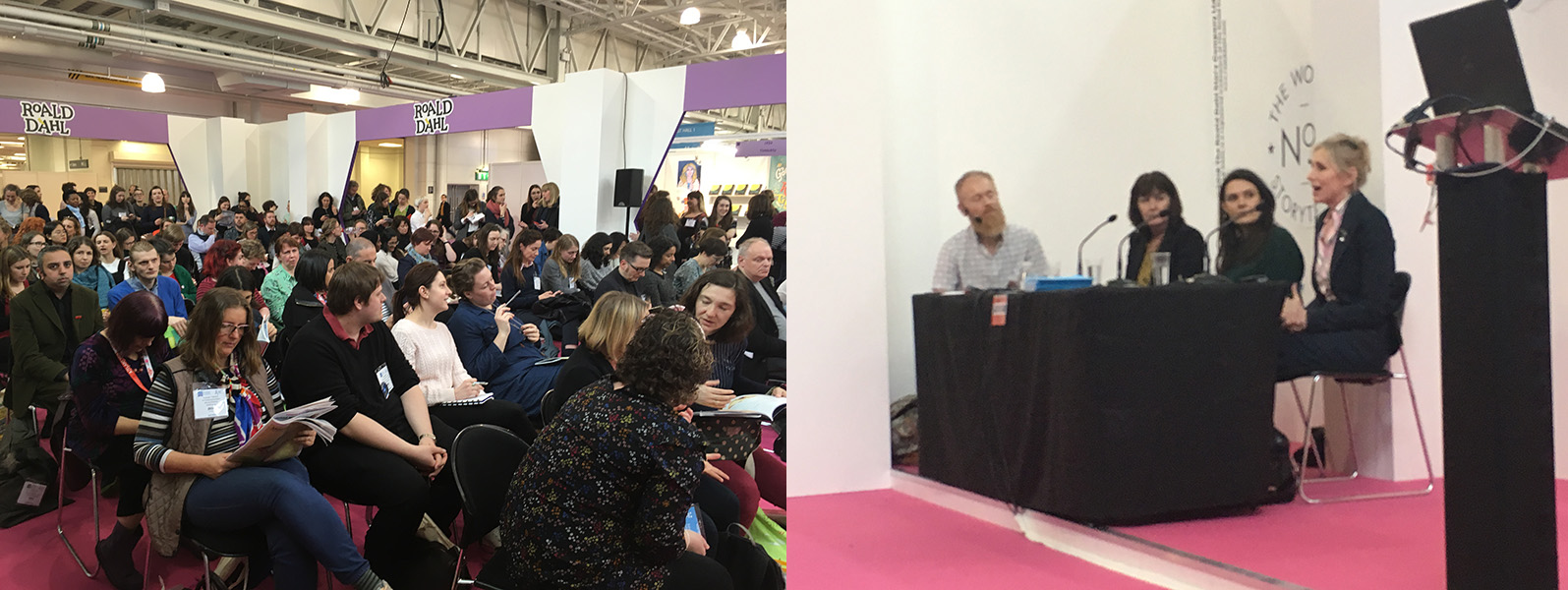
The Fair’s magazine asked us for some top tips for an illustration career:
The Illustrator’s career – top tips
Creating artwork for book covers, posters, children’s books, apps, animation, packaging – being an illustrator can be an enormously rewarding career. Like any creative freelance role much of the time is spent producing fantastic work, but the business side is equally important if you want to maintain longevity. Paying scant attention to self promotion, licensing, accurate fee quoting and invoicing doesn’t help anyone thrive in a competitive business.
The Association of Illustrators is the organisation that supports illustrators in all aspects of their role and at our Business Masterclass we will be giving out valuable advice on these areas. If you’re considering entering the industry, or even if you’ve been working as an illustrator for several years there’s always lots to learn. We’ve put together these top tips for a successful career in illustration:
Get your work out there – Self promotion is incredibly important. You can be the most talented artist around, but if art directors are not seeing your work you aren’t going to receive commissions. It goes without saying that an online presence in the form of a website is essential, but exploring the possibilities of social media can be very beneficial. Look how many illustrators and art directors are on Instagram – it’s the perfect platform for visual works.
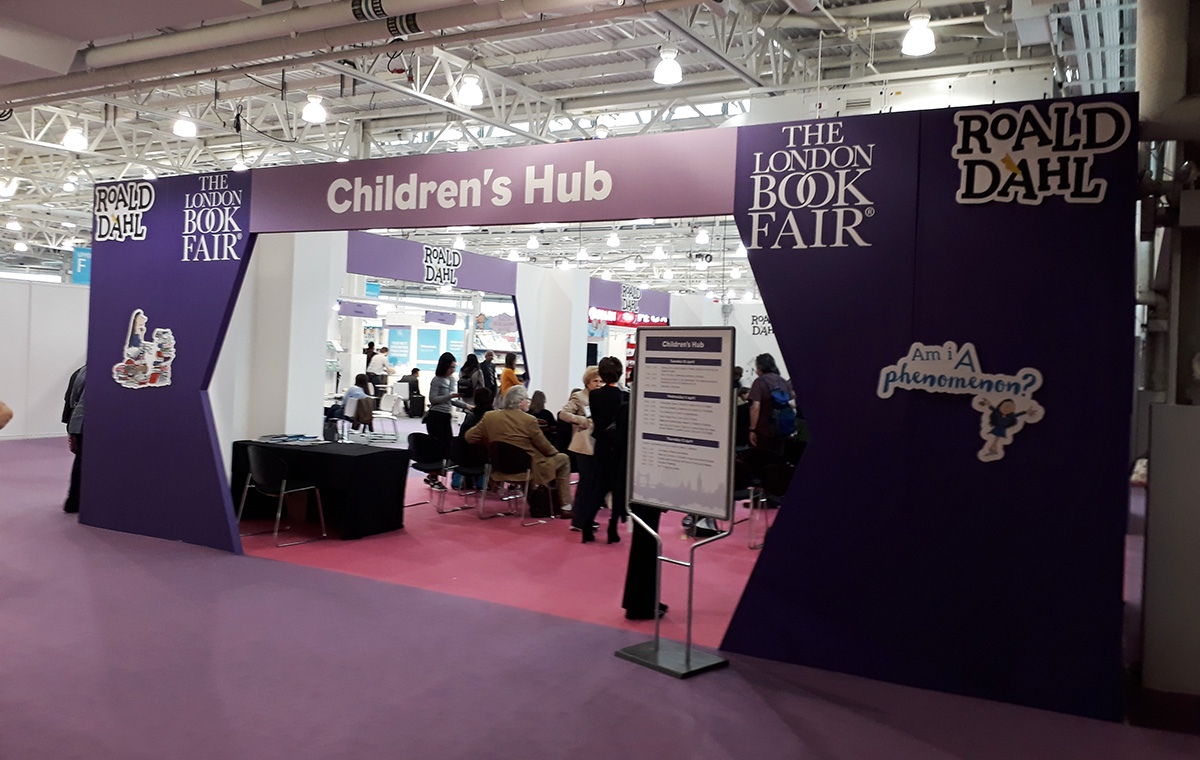
Pricing your work – It can be a challenge to know what fees to charge for commissions, and it’s essential that this is done accurately or you can lose out. Illustration fees are based on usage of the work, the territory it’s used in, and the length of time it is licensed for. Avoid working for free as it undermines the industry, and your own future careers. The AOI offers pricing advice to members and along with the European Illustrators Forum have just launched a Price It Right campaign to support illustrators and their commissions to values illustration and pay appropriately for it (#priceitright)
Copyright and Licensing – the moment an image is formed, the creator owns the rights in the work (the right to copy), and it is this right that illustrators are licensing to their clients. It’s important to understand this, as copyright is the basis by which artwork generates income for the creator. Contracts are there to define all the elements of a commission, and they need to be read (and understood – something AOI can advise on).
Communication – Both client and illustrator want the best from every commission, and it’s essential that both parties know what has been agreed. Communication is key, and it’s surprising how often confusions arise when fees, licensing and brief haven’t been tied down before the job is started. Get that right and it’s smooth sailing.
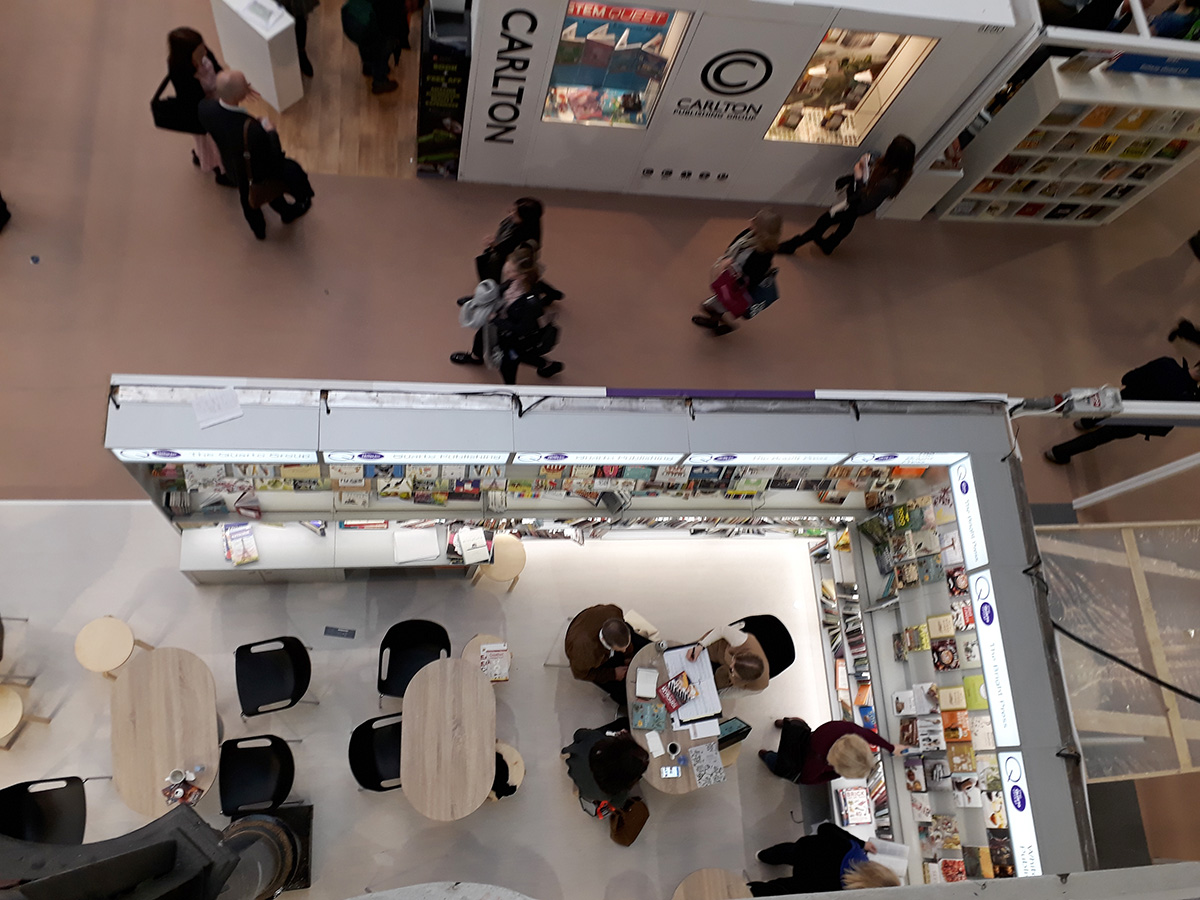
Photos by Ren Renwick and Derek Brazell
Back to News Page
